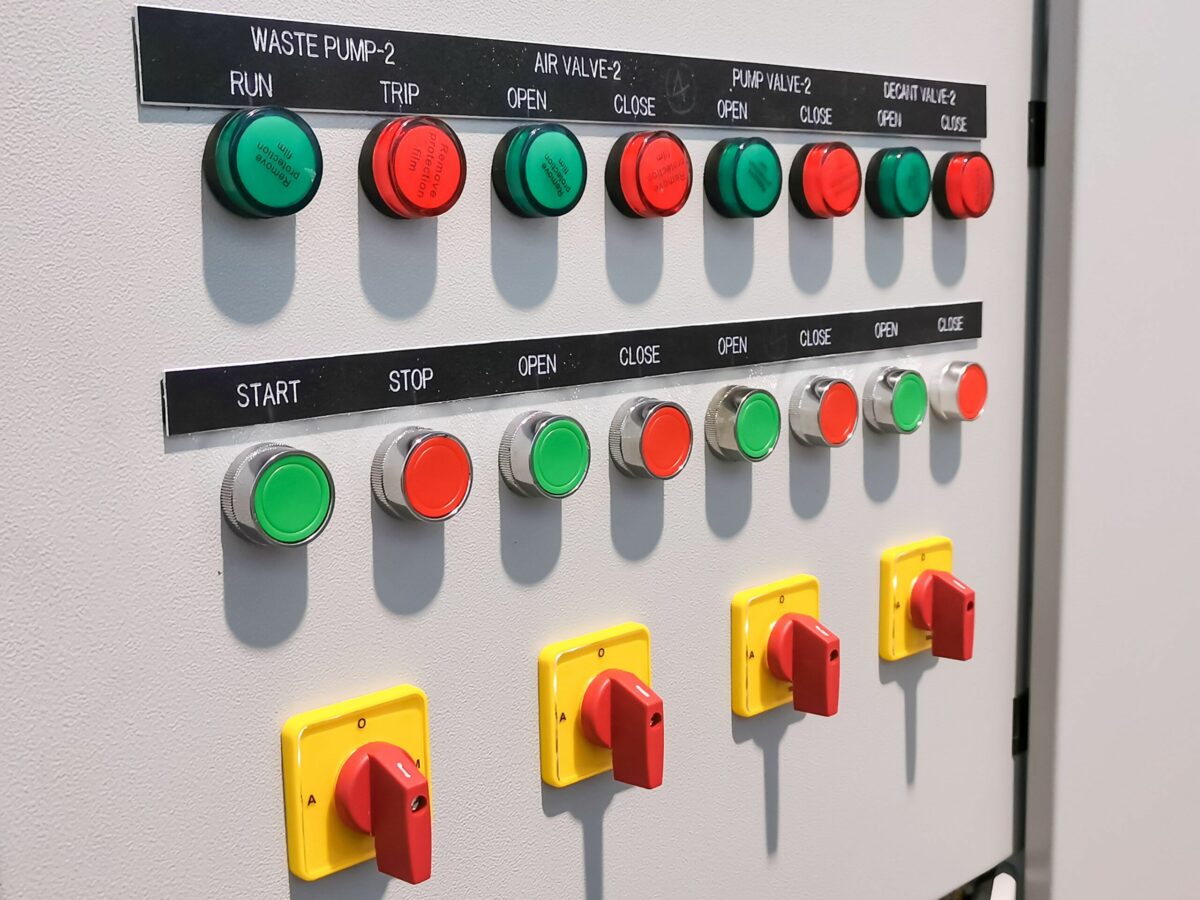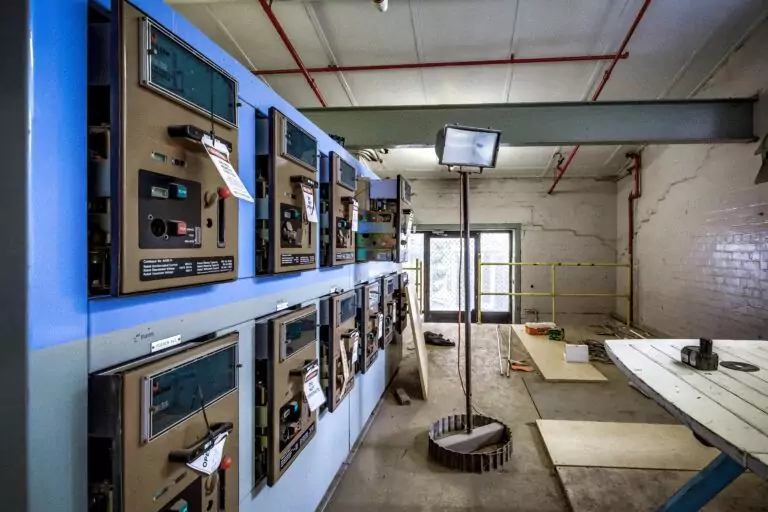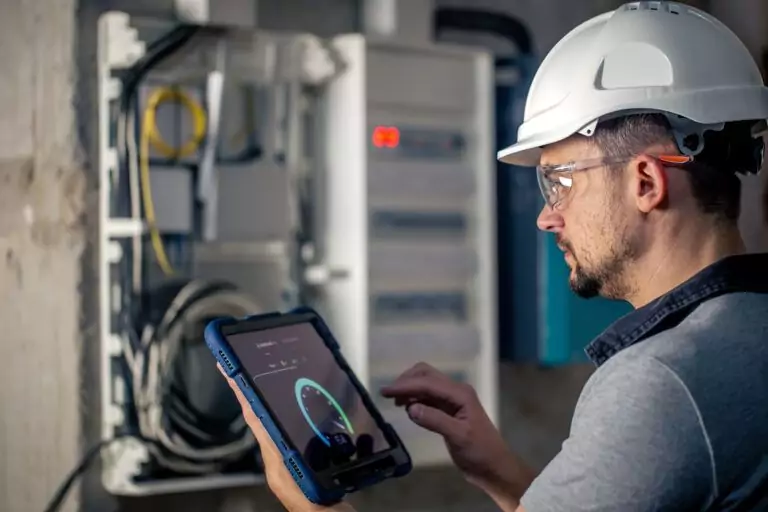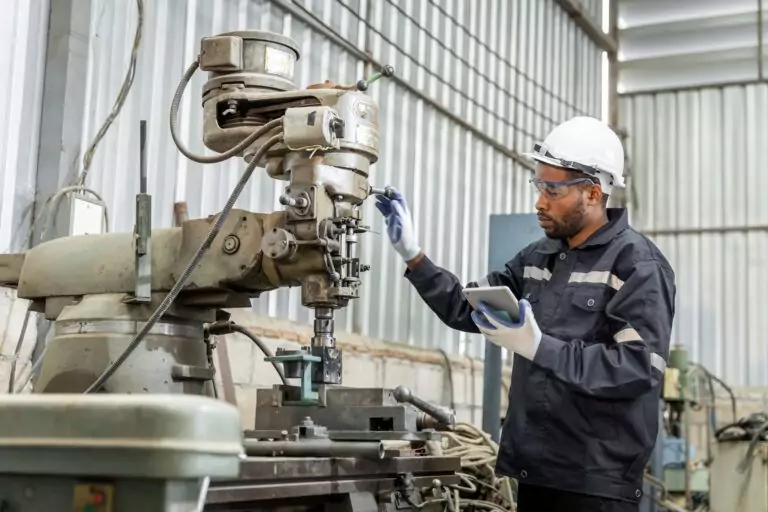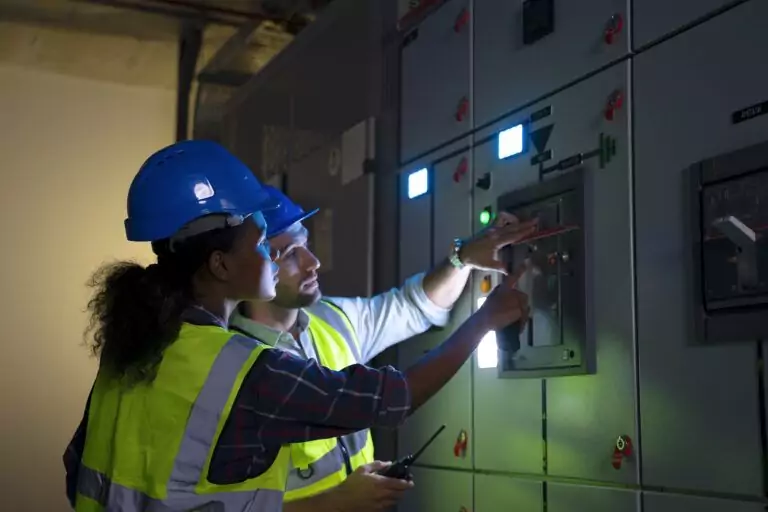Planning an industrial control panel can seem daunting, but it’s a critical step in ensuring the efficiency and safety of your operation. Whether you’re a seasoned engineer or a project manager embarking on your first control panel project, understanding the basics is key. In fields such as electrical engineering and automation, careful planning determines not only how systems perform but also how safely and efficiently they operate long-term.
From identifying application requirements to selecting the right components and ensuring compliance with safety standards, each step plays a pivotal role in the project’s success.
This article will guide you through the process, covering everything from determining control system complexity to planning for wiring, labeling, and ensuring ergonomic accessibility. With a focus on practical advice and industry standards, we aim to equip you with the knowledge you need to design and implement a robust industrial control panel. So, let’s dive in and demystify the process, ensuring your next control panel project is not only compliant but also efficient, safe, and perfectly tailored to your operational needs.
Identify the Application Requirements
Identifying the application requirements is a critical step in the development process, serving as the foundation for designing, implementing, and maintaining effective software solutions. This process involves a thorough understanding of the end users’ needs, the operational environment, and the objectives the application aims to achieve. This is typically the first task of experienced industrial control panel engineers, who ensure all operational inputs are factored into the design from the start. By accurately capturing these requirements, developers can ensure that the software meets its intended purpose, delivers value to users, and operates efficiently within its designated ecosystem.
By prioritising this step, development teams can build robust, user-centric applications that deliver lasting value and performance.
Determine Control System Complexity
Determining the complexity of a control system is pivotal in ensuring its efficiency, reliability, and adaptability to varying operational demands. The complexity is influenced by the number of components involved, the level of interaction between these components, and the sophistication of control strategies required to achieve desired outcomes. Integrated system design consultants can help assess these factors, especially when balancing modularity with performance.
The primary goal in evaluating control system complexity is to strike an optimal balance between system capabilities and operational simplicity. This involves identifying the minimal set of functionalities necessary to accomplish the system’s objectives without overcomplicating the design. Such an approach not only enhances the system’s usability and maintainability but also minimises potential points of failure, thereby increasing the system’s reliability.
Key considerations in determining control system complexity include the need for real-time data processing, the integration of advanced algorithms for decision-making, and the capacity for autonomous operation. Additionally, the scalability of the system to accommodate future expansions or modifications plays a crucial role in defining its complexity. By carefully analysing these aspects, engineers can design control systems that are both powerful and streamlined, capable of delivering high performance while remaining manageable and cost-effective.
Assess Environmental Conditions
Assessing environmental conditions is essential for the successful deployment and operation of control systems. Environmental factors such as temperature, humidity, vibration, and the presence of corrosive or hazardous materials can significantly impact the performance and longevity of control systems. Electrical safety compliance consultants are often brought in to evaluate risk factors like corrosion, voltage surges, and enclosure ratings during this stage.
The goal of assessing environmental conditions is to anticipate and mitigate potential environmental challenges that could degrade system performance or cause failures. This requires a comprehensive evaluation of the operational environment, including both the physical conditions and any external factors that may influence the system, such as electromagnetic interference or power fluctuations. Incorporating environmental assessments into the design process enables the development of control systems that are robust and adaptable to their intended operating conditions.
It ensures that the systems can maintain optimal performance levels and reliability, even in harsh or variable environments. Moreover, this proactive approach to environmental adaptation can significantly reduce maintenance needs and operational costs, contributing to the overall effectiveness and efficiency of the control system. By carefully determining control system complexity and assessing environmental conditions, engineers can design and implement solutions that meet the specific needs of their applications while ensuring high levels of performance, reliability, and adaptability.
Select the Appropriate Components
Selecting the appropriate components is crucial in designing an industrial control panel that meets operational requirements and ensures durability and safety. This selection process involves choosing the right type of controller, power supply components, and necessary protection devices. Each element plays a significant role in the overall functionality and efficiency of the control system.
The goal of selecting the appropriate components is to create a control system that is efficient, reliable, and capable of withstanding the demands of its operational environment. This careful selection process directly impacts the system’s performance, safety, and longevity.
Choose the Right Type of Controller
Selecting the right type of controller is fundamental to the control system’s efficiency and responsiveness. Controllers vary in complexity, from simple relays to advanced Programmable Logic Controllers (PLCs) and Distributed Control Systems (DCS). Industrial automation system designers help ensure that controller capabilities align with real-time performance and communication needs.
Opting for a controller that matches the system’s complexity ensures optimal performance and scalability for future enhancements.
Select Power Supply Components
The selection of power supply components is critical for the reliable operation of the control system. Factors such as voltage requirements, current demands, and power quality need careful consideration. It’s essential to choose power supplies that can handle the expected load while providing stable and clean power, even in fluctuating or harsh environmental conditions.
Additionally, incorporating uninterruptible power supplies (UPS) can safeguard against power interruptions, ensuring continuous operation.
Pick the Necessary Protection Devices
Choosing the necessary protection devices is vital for the safety and longevity of the control system. Protection devices, including circuit breakers, fuses, and surge protectors, are selected based on the potential electrical hazards and environmental risks specific to the application. These devices prevent damage from overcurrent, short circuits, and power surges, thereby protecting both the control system and the personnel operating it.
Proper selection and placement of these devices are imperative to maintain system integrity and prevent costly downtimes.
Design the Layout
Designing the layout of an industrial control panel is a critical step that impacts both functionality and safety. Layout planning involves the strategic placement of components to optimise space, ensure an efficient workflow, and facilitate easy maintenance. It requires a balance between compactness and accessibility, allowing for future expansions and modifications.
Compliance with safety standards is paramount, dictating the arrangement to minimise risks of electrical hazards and enhance ergonomic access for operators.
Consider Space for Future Expansion
When designing an industrial control panel, considering space for future expansion is essential. This foresight ensures the system can accommodate additional components or upgrades without requiring a complete redesign. Planning for expansion involves allocating extra space within the panel and selecting modular components that can be easily integrated or reconfigured.
This approach not only extends the lifespan of the control system but also supports scalability, allowing for seamless adaptation to evolving operational demands.
Ensure Compliance with Safety Standards
Ensuring compliance with safety standards is crucial in designing industrial control panels. Adherence to national and international electrical codes, such as the National Electrical Code (NEC) in the United States or the International Electrotechnical Commission (IEC) internationally, ensures that the control panel meets the required safety measures. Control panel standards specialists can review designs for code compliance and inspection readiness across industries.
By following these safety standards, designers can mitigate risks of electrical hazards, protect personnel, and ensure the reliability and longevity of the control system.
Calculate Power and Cooling Requirements
Calculating power and cooling requirements is essential for ensuring the efficient and safe operation of an industrial control panel. This dual focus on power and cooling underpins the system’s reliability, performance, and longevity, aligning with operational demands and environmental conditions.
Estimate Total Power Consumption
Estimating total power consumption is a critical step in ensuring that an industrial control panel operates within its electrical capacity. This involves calculating the power usage of each component and summing these values to determine the overall demand. Accurate estimation helps in selecting a power supply that can handle the load efficiently, preventing overloads and enhancing system stability.
It also informs the design of circuit protection and energy management strategies, contributing to operational efficiency and sustainability.
Plan Cooling Solutions
Planning cooling solutions is essential to maintain the control panel’s performance and prevent component failure due to overheating. This process involves evaluating the heat generated by the system and selecting appropriate cooling methods, such as forced air ventilation, heat sinks, or air conditioning units. The choice of cooling solution depends on the panel’s environment, the heat tolerance of its components, and the available space for cooling infrastructure.
Effective cooling ensures the longevity of the control system by maintaining temperatures within safe operational limits.
Plan for Wiring and Labeling
Planning for wiring and labeling is a fundamental aspect of industrial control panel design that ensures safety, functionality, and ease of maintenance. Effective wiring and labelling strategies contribute to a well-organised control panel that is both safe to operate and easy to understand.
Designate Wiring Color Codes
Designating wiring color codes is essential for ensuring the safety and efficiency of an industrial control panel. By adhering to industry standards for colour coding, technicians can quickly identify wires, which reduces the risk of errors during installation, maintenance, and troubleshooting. This practice not only speeds up the work process but also significantly enhances the safety of the system by preventing misconnections that could lead to equipment damage or safety hazards.
Plan for Clear Labeling Practices
Implementing clear labeling practices is crucial for the long-term operability and maintenance of control panels. Clear, durable labels for components, wires, and terminals facilitate easy identification, simplifying the processes of testing, troubleshooting, and modifying the system. Planning for clear labelling involves choosing labels that remain legible in the environmental conditions of the panel’s location and ensuring that the labelling scheme is consistent throughout the control system.
This attention to detail in labelling supports efficient operation and maintenance, which in turn contributes to the system’s overall reliability and safety.
Ensure Compliance with Standards and Regulations
Ensuring compliance with standards and regulations is a critical component in the planning and construction of industrial control panels. This adherence involves aligning the design and components of the control panel with both national and international electrical codes, such as the National Electrical Code (NEC) in the United States and the International Electrotechnical Commission (IEC) standards globally. Compliance ensures that the control panels meet the required safety, quality, and performance benchmarks, mitigating risks of electrical hazards and operational failures.
Furthermore, understanding specific industry requirements is essential, as different sectors may have unique standards that affect the design and functionality of control systems. Compliance not only safeguards the operational integrity of the control panel but also facilitates smoother certification processes and market acceptance.
Refer to National and International Electrical Codes
Referring to national and international electrical codes is imperative for the design and construction of industrial control panels. Adherence to standards such as the NEC (National Electrical Code) in the United States and the IEC (International Electrotechnical Commission) globally ensures that control panels are built to the highest safety and quality benchmarks. This compliance minimises the risk of electrical hazards, enhances system reliability, and facilitates regulatory approval and market acceptance.
Understand Specific Industry Requirements
Understanding specific industry requirements is crucial for tailoring control panel designs to meet the unique operational demands of different sectors. Each industry may have its own set of standards and regulations that impact various aspects of control panel design, including safety measures, component selection, and system functionality. Familiarity with these requirements ensures that control panels not only comply with general electrical codes but also meet the specialised needs of the industry they serve, optimising performance and ensuring regulatory compliance.
Review and Finalize the Design
Reviewing and finalising the design of an industrial control panel is a crucial phase that ensures the system meets all specified requirements and standards. This meticulous review process guarantees the control panel’s reliability, safety, and operational efficiency, aligning with project objectives and industry practices.
Check for Design Errors
Checking for design errors is a vital step in the review process of an industrial control panel. This task involves scrutinising the design for any potential flaws or oversights that could impact the system’s functionality or safety. Identifying and correcting these errors before finalisation prevents costly revisions and ensures the control panel operates as intended, which enhances both efficiency and reliability.
Ensure Ergonomic Accessibility for Maintenance
Ensuring ergonomic accessibility for maintenance is crucial for the long-term operation of an industrial control panel. Designing the panel with maintenance in mind facilitates easier access to components, reducing downtime and the risk of injury. This consideration includes the layout of components, labelling, and providing sufficient space for tools and hands.
Ergonomic design not only improves safety and convenience for technicians but also contributes to the system’s overall sustainability.
Plan for Testing and Quality Assurance
Planning for testing and quality assurance is an integral part of developing industrial control panels, ensuring they meet the required standards of performance and safety. This comprehensive approach to testing and quality assurance helps identify and rectify potential issues early, ensuring the reliability and safety of the control panel before it is commissioned for use.
Conduct Electrical Tests
Conducting electrical tests is crucial for assessing the safety and functionality of industrial control panels. These tests help identify electrical faults, ensuring that all components and wiring meet the required standards.
Insulation Resistance and Continuity Tests
Insulation resistance and continuity tests are essential for verifying the integrity of the control panel’s electrical insulation and the continuous paths of the wiring. These tests prevent potential short circuits and electrical fires, safeguarding both the control panel and the operators.
Perform Functional Testing
Performing functional testing involves checking the operational performance of the control panel to ensure it meets the designed specifications. This step verifies that all system functions operate correctly and interact as expected, ensuring the panel’s reliability in real-world applications.
Simulate Operational Conditions
Simulating operational conditions tests the control panel under scenarios it will face during actual use. This includes varying load conditions, temperature changes, and power fluctuations. Simulation helps confirm the panel’s durability and adaptability to environmental and operational stresses, ensuring long-term performance and reliability.
Prepare for Installation and Commissioning
Preparing for installation and commissioning is a critical phase in the deployment of industrial control panels, ensuring a smooth transition into operational status. This comprehensive approach ensures that the control panel is integrated seamlessly into the operational environment, ready to meet the demands of its application.
Schedule Downtime if Necessary
Scheduling downtime is crucial when integrating new industrial control panels to minimise disruption to existing operations. This strategic planning ensures that installation and commissioning occur during periods of low activity, reducing impact on productivity and allowing for a smoother transition.
Train Personnel on Operation and Maintenance
Training personnel on the operation and maintenance of the new control panel is essential for ensuring efficient and safe usage. Providing comprehensive training equips operators and maintenance staff with the necessary knowledge to handle the system effectively, enhancing both performance and safety.
Building Confidence into Every Control Panel
Designing an industrial control panel is a meticulous process that blends technical precision with strategic foresight. From understanding application requirements to finalising layouts and preparing for installation, this guide has walked you through the critical stages to ensure your control panel is safe, scalable, and suited to your operational environment. Every decision, from component selection to ergonomic considerations, plays a vital role in achieving a robust and compliant system.
At Vista Projects, our integrated engineeringThe process of integrated engineering involves multiple engineering disciplines working in conjunction with other project disciplines to e... and system integration expertise positions us as your ideal partner in industrial control design. We tailor our solutions to align with regulatory standards and operational goals, ensuring your systems are both efficient and future-ready.
Looking to elevate your control panel strategy? Contact Vista Projects today and let’s engineer a smarter, safer control system for your operations.
